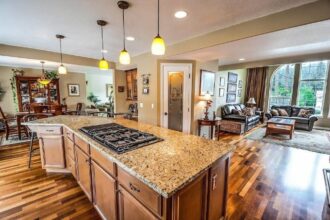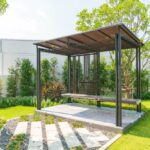Creating a commercial space that’s both functional and visually compelling is no longer optional. Whether you’re managing a retail shop, office building, or hospitality venue, thoughtful design directly impacts productivity, customer experience, and overall brand perception. A well-designed space blends utility with aesthetics, guiding behavior and creating a lasting impression.
In this article, we explore three crucial design pillars that help shape modern commercial environments: illumination, layout, and style innovations. Each plays a distinct role but works in harmony to elevate the entire experience.
1. Illumination: Light as a Design Tool
Lighting does more than brighten a room. It sets mood, defines space, and even influences purchasing behavior and employee morale. Unfortunately, many commercial spaces still rely on outdated lighting systems that do little to enhance ambiance or functionality.
Natural Light First
Maximizing daylight should always be the priority. Studies show that exposure to natural light improves productivity and mood. Design strategies like adding skylights, using glass partitions, and positioning workspaces near windows can significantly increase natural light penetration.
Layered Lighting for Function and Mood
Using a mix of ambient, task, and accent lighting creates depth and flexibility. For example:
- Ambient lighting sets the overall tone (e.g., ceiling fixtures).
- Task lighting helps with specific duties (e.g., desk lamps or kitchen spotlights).
- Accent lighting highlights features (e.g., artwork or architectural details).
LED systems are a smart investment for energy efficiency and control. Many modern fixtures allow for dimming and color temperature adjustments to suit different times of day and uses.
Highlighting Brand Identity
Lighting also plays a branding role. Warm tones may suit hospitality businesses, while bright white lighting is common in high-tech offices or medical environments. Choosing fixtures that align with your brand personality adds subtle cohesion.
2. Layout: Form Meets Function
An effective commercial layout isn’t just about aesthetics—it’s about flow. It directs traffic, separates private and public zones, and ensures every square foot serves a purpose.
Open Plan vs. Defined Spaces
Open-concept layouts are popular for collaboration, but they’re not always the best fit for every business. Retail environments, for example, may benefit from defined pathways that lead customers through product displays. Offices may use modular furniture to offer flexibility while still creating quiet zones.
Zoning with Purpose
Establishing clear zones—like reception, lounge, work areas, and meeting rooms—makes navigation intuitive and enhances user experience. This is especially important in high-traffic spaces like clinics, coworking hubs, or event venues.
Accessibility and Safety
ADA compliance, adequate signage, and hazard-free paths are non-negotiable. For exterior areas like walkways and parking lots, working with a commercial paving company ensures surfaces are both durable and safe for all visitors. Proper paving not only improves aesthetics but also supports long-term structural integrity.
Flexibility Is Key
Future-proof layouts allow for adaptability. Furniture on casters, movable partitions, and plug-and-play workstations accommodate growth and changing needs without major renovations.
3. Style Innovations: Cohesion and Character
Design trends come and go, but style with substance leaves a lasting impression. Commercial interiors today lean toward clean lines, comfort, and authenticity. People crave environments that feel curated but not contrived.
Material Matters
Natural materials like wood, stone, and metal are in high demand. They offer durability while lending warmth and sophistication. When used strategically—such as reclaimed wood walls or polished concrete floors—they convey sustainability and modern taste.
Biophilic Elements
Incorporating plants, water features, or green walls taps into biophilic design principles. These elements have been linked to reduced stress and increased well-being. In retail, greenery can draw attention to displays; in offices, it can soften hard lines and reduce noise.
Color with Intention
Color psychology plays a powerful role in how people interact with a space. Cool tones often suggest calm and professionalism, while bold shades energize and draw attention. Stick with a base palette and use accents to add contrast and visual interest.
Customized Touches
Wall graphics, murals, and branded decor add personality. These don’t have to be expensive—local artwork or minimalist signage can reflect your brand story in subtle yet effective ways.
Tying It All Together
Lighting, layout, and style aren’t isolated elements. They intersect to create a complete experience. For example, a well-lit focal wall in a reception area combines all three: lighting directs attention, layout supports function, and styling defines atmosphere.
Consistency is key. Disjointed elements confuse users and dilute the brand message. When these components align, they send a unified signal: this space is thoughtful, functional, and designed with intent.
Whether you’re starting from scratch or refreshing an existing location, investing in these areas will pay off. Beyond aesthetics, these updates support workflow efficiency, customer satisfaction, and long-term business growth.
Final Thoughts
Designing a better commercial space doesn’t mean chasing trends or breaking the bank. It’s about using design fundamentals—like lighting, layout, and styling—to create spaces that work hard and look good doing it.
Start with what you have. Maximize natural light. Rethink your layout to improve flow. Then, add design touches that reflect your identity. Every choice matters, from the lighting overhead to the paving underfoot.
Smart design isn’t a luxury—it’s a business advantage.

















